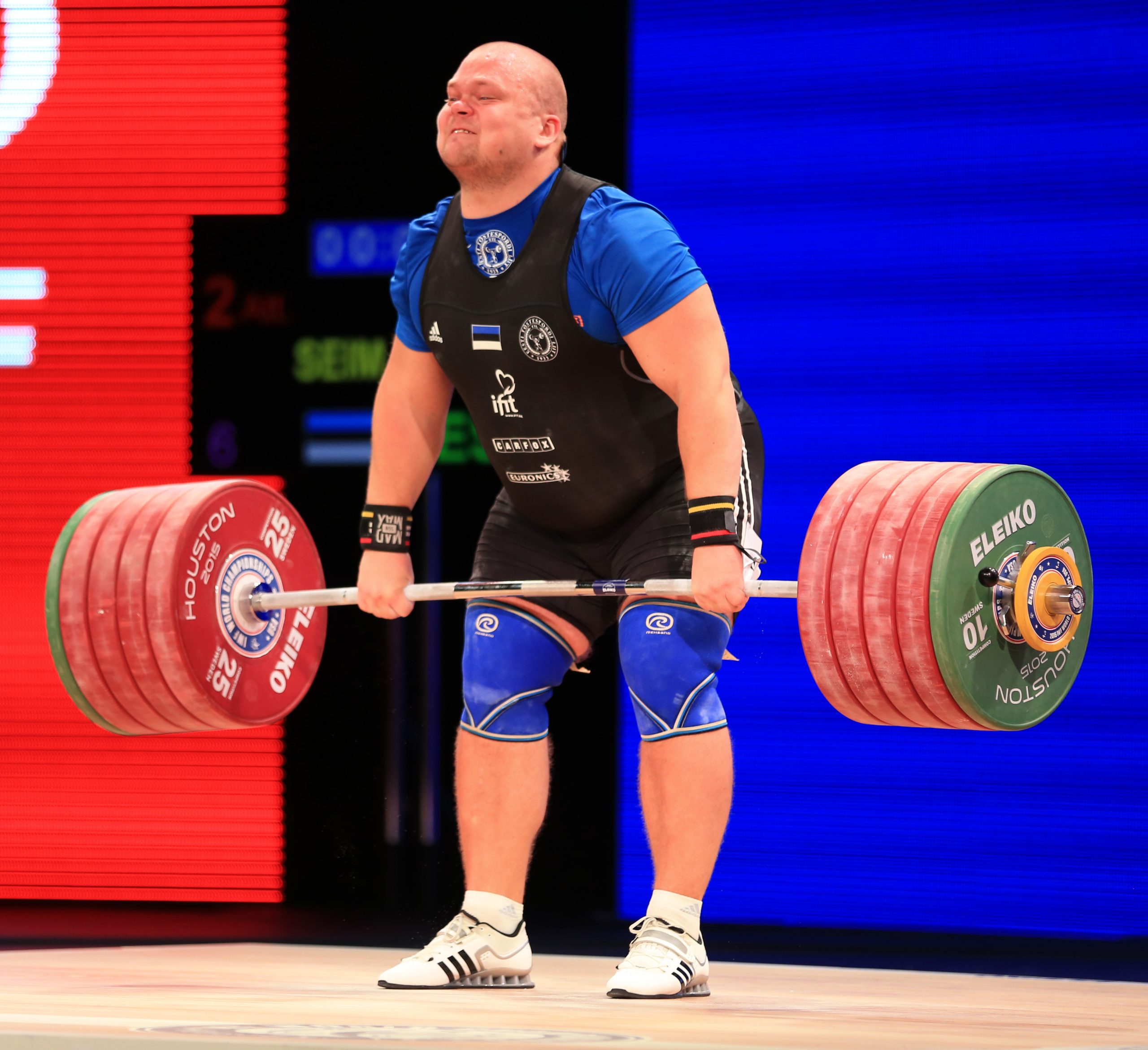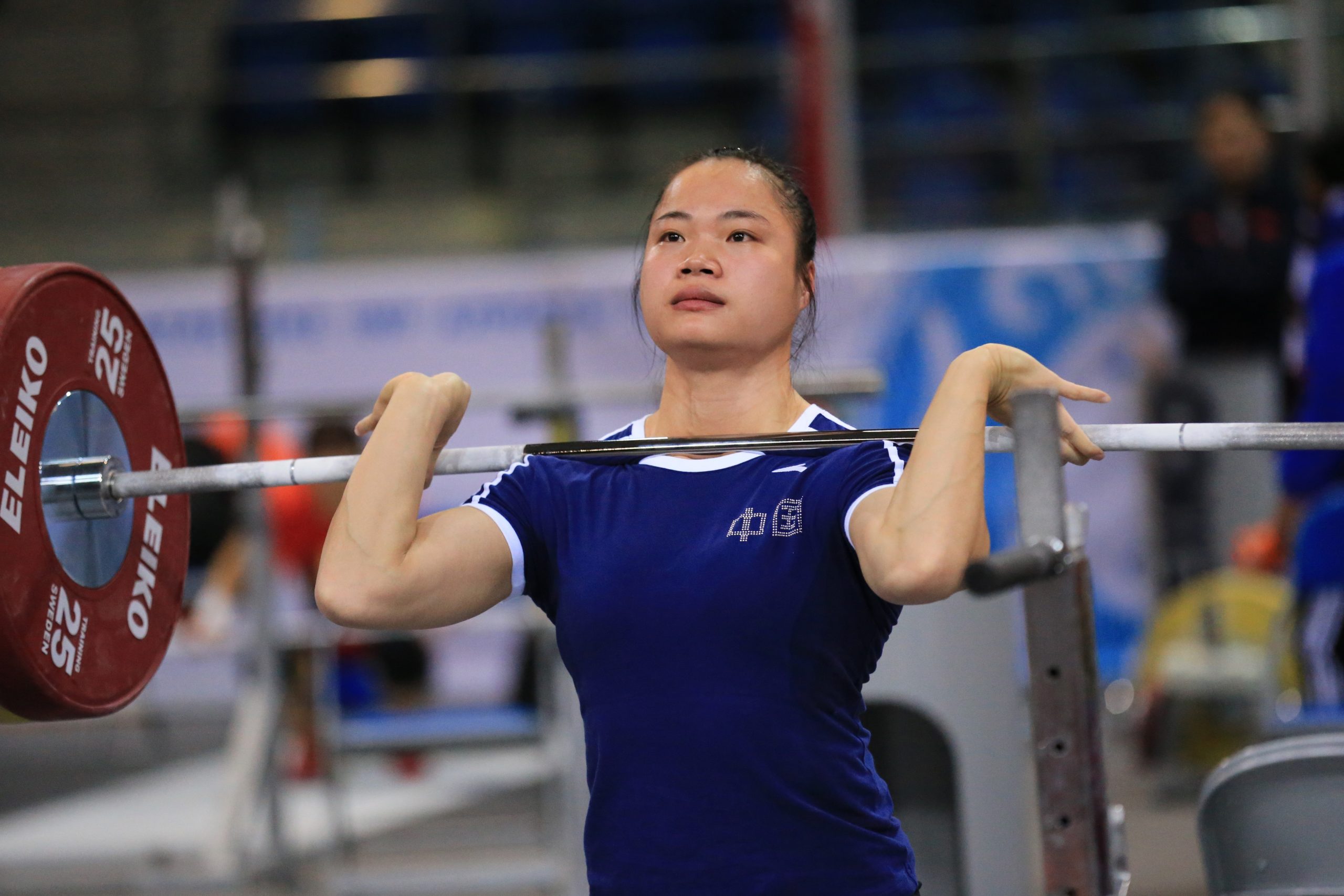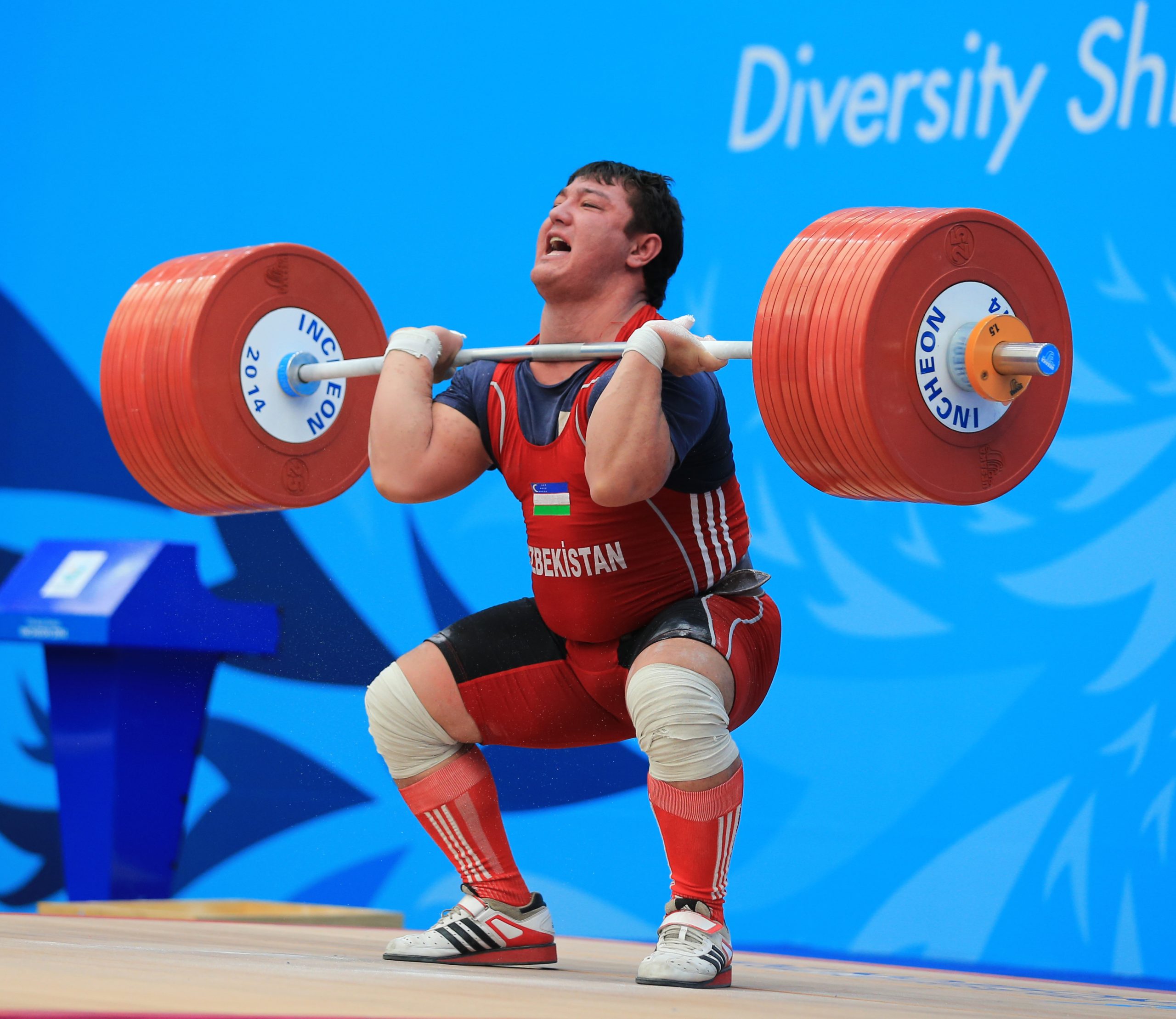Concerning the Russian Squat Routine
Andrew Charniga, Jr.
Sportivnypress.com
{first posted 2001}
Charniga photo.
The translation of the article “Methods of Developing leg Strength” can be found on this site. Anyone unfamiliar with the origin of this program can see that it was not designed for Powerlifting; or the brainchild of any “Doctor of Squatting”. The question should be raised as to whether this type of specialized training for the legs is necessary for weightlifting training.
It is obvious from the contents of this article that it is designed for Olympic weightlifters. The author recommends this program if one’s squat results are below what is considered the norm; and, it is to be applied for a specific period of training – the preparatory period.
The main characteristic of this program which clearly distinguishes it from powerlifting is that unlike Olympic lifting training, the legs are not even involved in one lift (the bench press) and only for a short range of motion in the other (the deadlift). Conversely, legs are heavily involved in the lifting in both the snatch and the clean and jerk. So, any specialized loading for the legs in Olympic lifting has to take into consideration the overall loading on the legs from the other exercises and the potential negative effect the hard leg work from squatting would have on the performance of the the snatch and the clean and jerk.
Is a specialized squat routine necessary for Olympic lifters?
Training the squat is going to have the greatest effect on the recovery phase of both the snatch and the clean. Since the weight in the snatch is usually about 80% of the clean, the lifter’s leg strength in this segment is usually more than sufficient to complete the recovery. So, it is in the clean, where the lifter has to stand with a very heavy weight, that the leg strength that is developed by squatting is critical.
Charniga photo.
Therefore, it is a logical assumption that if one has difficulty recovering from the clean, more squatting is needed. The attraction of this particular Russian program to the western mind is that, one, it appears to address the issue of a difficult recovery in the clean; two, it conforms to the western notion of gradual change, i.e., improvement in strength, will be the inevitable result of a uniform, gradual and progressive increase in the training load over a specific time frame.
The basic idea behind this type of program is that each increase in the number of repetitions per set (from 6 sets of 2 to six sets of six) is appropriate; the body is ready and needs this increase in order for the muscles to respond. The notion that the body’s response to training may not necessarily change in lock – step with this graduated scheme is not a consideration.
Two reasons come to mind one should forego employing this “routine”:
- Squats alone do not address the technique of the clean. Technique has a significant effect on the bio – mechanical efficiency of the clean and consequently the effort required of the recovery phase.
- The legs generate the most productive power in weightlifting (or for that matter in most of athletics) over a relatively small range of motion at the knee, hip and ankle joints. The hamstring muscles (within that relatively small range of motion at the knee, ankle and hip, where the lifter generates the greatest forces on the barbell) are not strengthened by squatting.
With respect to the first reason, squatting and the technique of the clean, consider the following examples of three outstanding squatters.
The author witnessed the Soviet super-heavyweight Aslanbek Yenaldiev pinned with a 240 kg clean at the 1979 Spartakiade. He tried bouncing 6 – 8 times but was physically unable to recover form the squat. He was the “champion squatter” of the the Soviet Union with a 455 kg back squat (23).
According to Leonid Taranenko (11), his best front squat was 300 kgs for 3 repetitions. Yet, in exactly the same manner as Yenaldiev, the author witnessed Taranenko pinned with 250 kgs at the 1983 Soviet Spartakiade. It is does not follow that a lifter would be unable to stand with a weight 50 kgs below his personal best in the front squat.
Antonio Krastev (13), had a best front squat of 310 kgs, yet he was unable to rise with successive 255 kgs and 257.5 kg cleans at the 1987 World’s Championships.
Now, consider the results of two of the world’s great lifters in the clean and jerk: Vasily Alexeev and Anatoli Pisarenko.
According to Alexeev (1,2, 21) he did not attempt to lift very large weights in the squat. Indeed, Alexeev uses the following example to show that results in weightlifting are not dependent on high results in the squat. “Look, a lot of guys train incorrectly. They end up doing a lot of work for nothing. For example, Falyev is a 110 kg lifter on the national team, who squats with 320 kgs. I have never used more than 270 kgs. This is a difference of 50 kgs in our respective training weights. He clean and jerks 220 kgs and I do 256 kgs. So, results in the classic exercises are not determined by the strength of the legs”(21).
When the author asked Leonid Taranenko about Alexeev’s squatting weights, he said, “That’s about right. He usually squatted with weights that were equal to his clean and Jerk” (11).
In light of Alexeev’s training in squat, consider the USA’s Mark Henry. He could front squat 325 kgs (10). However, his best clean and jerk was 220 kgs. Legendary squatter Paul Anderson (1200 lbs in the back squat) had a clean and jerk of about 200 kgs (23). Likewise, Shane Hammon has a 230 kg clean and jerk to his credit and has squatted about a 1000 lb. In each of these cases the clean and jerk to squat ratio is considerably outside the norm (9,18,20,22). Their results in the squat had long since reached the point of diminishing returns.
Charniga photo.
Anatoly Pisarenko had a result of between 280 – 290 kgs in the back squat and a clean and jerk of 265 kgs. On this subject of “big back squats” and “big lifts”, Alexander Kurlovich (12), said he witnessed Pisarenko miss a squat of 260 kgs in training; only to clean and jerk it 5 days later. According to Taranenko, “if he (Pisarenko) had to stop at the bottom of a clean, he couldn’t get up”(11).
This observation by Taranenko, is of course the crux of the issue. The three big squatters cited, who were pinned with their cleans, all stopped at the bottom and then tried to recover. Conversely, Alexeev and Pisarenko always employed good technique in timing the recovery in order to utilize the bend in the bar and the storage of elastic energy produced by the rapidly stretching muscles.
During the competition of the 94 kg class at the 2001 European championships the author saw one of the lifters make a very easy 175 kg snatch. This prompted the person seated next to me to point – out, this power was due, without a doubt, to his ability to front – squat 300 kg. Subsequently, I watched this same lifter, literally screaming to recover from his 207.5 kg and 210 kg cleans. I had to point out to this same person, that those weights could not possibly be that heavy, for someone whose legs are purportedly, so strong.
Let’s look at the second reason. The importance of the hamstring muscles in weightlifting should not be underestimated (15,16). In the snatch and the clean and jerk the greatest power output occurs in the “explosion” phase (from a knee angle of about 120 – 125 degrees). The power the lifter generates in the final acceleration on the barbell (i.e, the work of the quadriceps muscles) is facilitated considerably by the speed with which the quadriceps have been stretched as the knees shift forward under the bar.
The strength of the hamstrings (in performing flexion at the knee) in relation to that of the quads, is critical to the speed with which the action of shifting the knees under the bar occurs. Likewise, hamstring strength (in stabilizing the hip) is crucial as the shins straighten during the first phase of the pull. So, one needs to be careful not to create a significant imbalance in strength between the quads and hamstrings.
Furthermore, there is need for caution in planning a specialized loading for squats because “A lot of squats adversely affect speed” (12).
According to two -time Olympic champion Alexander Kurlovich was asked about this Russian squat program. The author of “Methods of Developing Leg Strength”, A.A. Zenalov, is from Grodno. This is just happens to be Alexander Kurlovich’s home -town.
Charniga photo.
Alexander knew the coach but was unfamiliar with the program. He had never used such a program. Generally, Kurlovich trained with weights 10 – 20 kgs in excess of his clean and jerk. His best front squat was 280 x 2 kgs (he clean and jerked 262.5 and 265 kgs, only to be turned – down for not having the bar under control) and best back squat was 350 kgs (12).
Kurlovtich questioned the author’s claim that this program had been employed by the number and quality of lifters cited in the article.
What is interesting about the “routine” is that it appears to be in conformity with the literature with respect to the search for the optimal number of repetitions per set (3,4,5,6,7,14,18,20) and the volume of squats in training (17,18,20).
Like Kurlovitch, Yuri Zakharevich apparently is between the two extremes of the examples cited. His best front squat was 250 kgs, done at the time of his best clean of 265 kgs. His best back squat was 300 kgs x 2; power clean 235 kgs; and, snatch from blocks – 215 kgs. He has never heard of a “Russian Squat Routine”, and he personally, never followed a special program of squatting, specifically to increase his squat results (24).
Without a doubt, squats are the most important assistance exercise. And, someday it may be universally accepted, that after a period of several years of development, only the classic snatch, the classic clean and jerk and front squats will make – up the weightlifter’s arsenal of training exercises (19).
However, pursuit of a “big squat” to achieve high results in the snatch and the clean and jerk, by doing specialized training on the squat is questionable. In all likelihood it would be better to spend more time and effort perfecting the technique of the clean and focus on the front squat, which is more specific to the leg strength of the recovery from the clean.
References
- Alexeev, V. I., “My training Experience”.Tyazhelaya Atletika, 5:13, 1976
- Alexeev, V. I., “My training Experience”.Tyazhelaya Atletika, 6:28, 1977
- Berger, R.A., “Effect of Varied Weight Training Programs on Strength”. Res. Quart., 33 (2):334, 1962
- Berger, R.A., “Optimal Repetitions for the Development of Strength”. Res. Quart., 33 (3):334, 1963.
- Berger, R.A., “Comparative Effect of Three Weight Training Programs”. Res. Quart., 34 (3)396, 1963
- Berger, R.A., “Comparison Between Resistance Load and Strength Improvement”. Res. Quart., 34 (4):637, 1962
- Berger, R..A., “Effect of Maximum Loads for each of Ten Repetitions on Strength Improvement “. Res. Quart., 38 (4)715, 1967
- Chrenyak, A.V., “Methods for Planning the Training of Weightlifters”, Fizkultura I Sport, Moscow, p 18 – 23, 44 – 46, 1978
- Barnett, W., Personal Communication
- Taranenko, L., Personal Communication
- Kurlovitch, A., Personal Comunication
- Krastev, A., Personal Comunication
- Delorme, T. L., “Effect of progressive Resistance exercise on Muscle Contraction”. Arch. Of Phys. Med. 33:86, 1952
- Lukashev, A. A. “Substantiation of Methods of Perfecting Snatch Technique of Class II Weightlifters”, 1980 Weightlifting Yearbook, p Sportivny Press, Translated by Andrew Charniga, Jr.
- Lakashev, A. A., Personal Communication
- Ermakov, A.D., “The Training Load of Weightlifters in Pulls and Squats”, 1980 Weightlifting Yearbook, p 34 – 38 Sportivny Press, Translated by Andrew Charniga, Jr.
- Roman, R.A., “The Training of the Weightlifter” Sportivny Press, Translated by Andrew Charniga, Jr.
- Roman, R. A., Personal Communication
- 20. Medvedyev, A.S., A System of Multi – Year Training in Weightlifting, Sportivny Press, Translated by Andrew Charniga, Jr.
- Ivanov, D.I., “Russkii Ispolin – Vasily Alexeev” Cov. Rossia, Moscow, p – 131 – 141. 1980
- Ivanov, A. T., “Squat Results and Their Connection to Achievements in the Clean and Jerk”, Tyazhelaya Atletika, p26 – 29, Fizkultura I Sport, Moscow 1976
- Demarco, L. , Personal Communication
- Zakharevich, Y., Personal Communication




